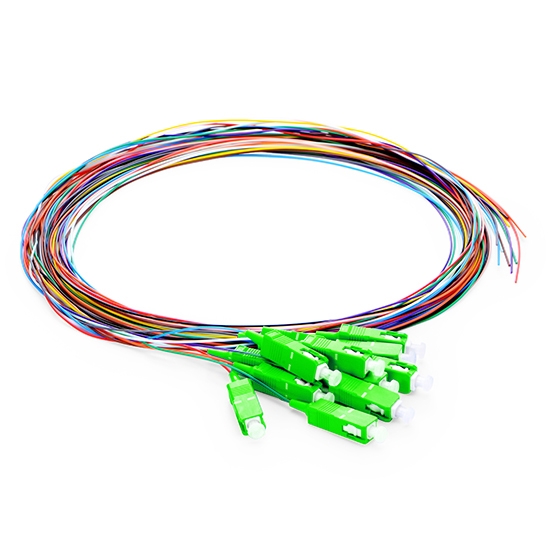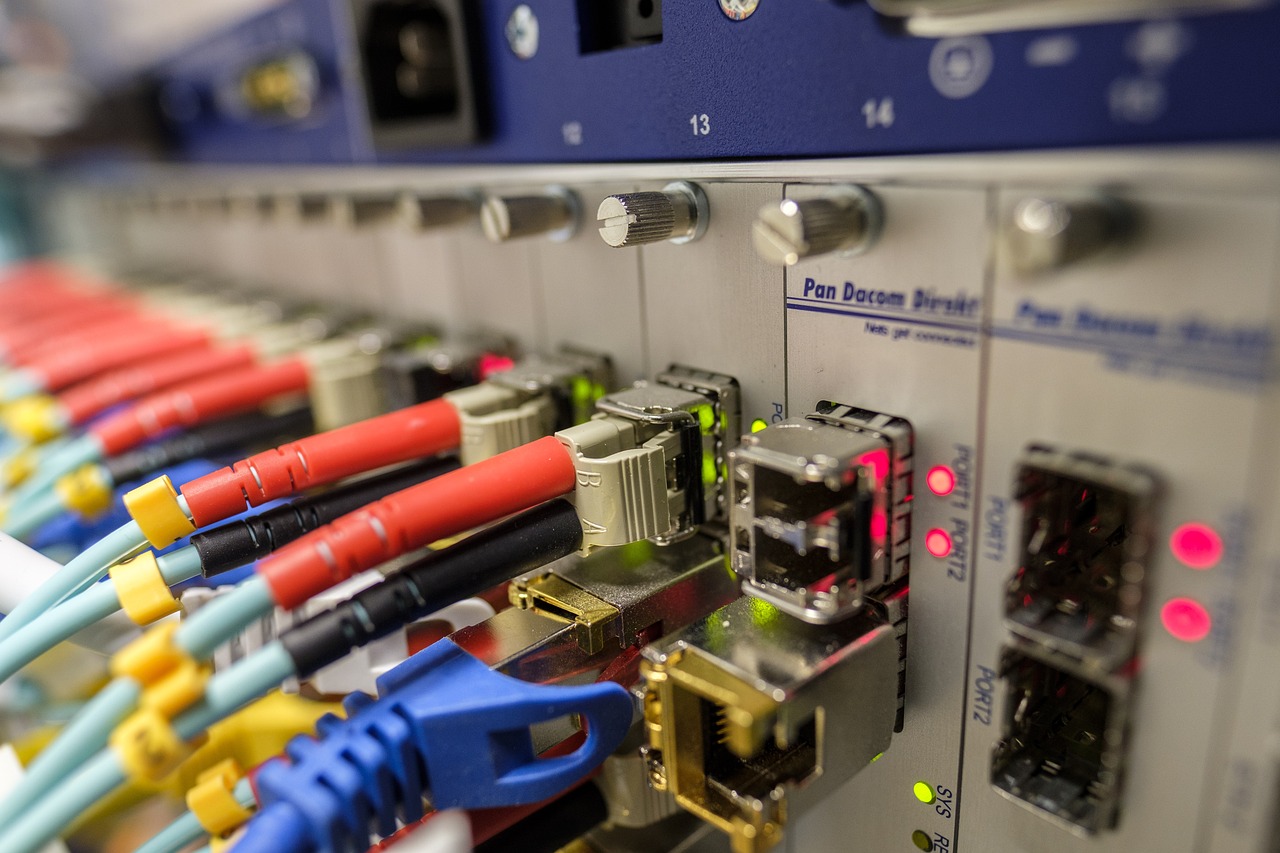4 Reasons Why SC/APC Color-Coded Fiber Optic Pigtails Are Essential for Single-Mode Communication

Introduction to SC/APC and Its Role in Communication
When delving into the world of SC/APC and its significance in communication, it's essential to understand the acronym itself and the pivotal role it plays in single-mode fibers.
What is SC/APC?
Breaking Down the Acronym
The term SC/APC stands for "Subscriber Connector/Angled Physical Contact." This type of connector is specifically designed for high bandwidth, long-distance communication systems using single-mode fibers. The angled end-face of the connector helps minimize back reflection, ensuring a more reliable signal transmission.
Why It's Used in Single-Mode Fibers
Single-mode fibers are designed to carry a single ray of light, providing a higher transmission rate over longer distances. The precision and reliability of SC/APC connectors make them ideal for maintaining signal integrity within these fibers.
The Importance of Fiber Optic Pigtails in Communication
The Basics of Fiber Optic Pigtails
Fiber optic pigtails are short segments of fiber optic cable with an exposed core at one end and a connector at the other. They act as a bridge between fiber cables and other equipment, facilitating seamless connections within communication networks.
Connecting the Dots: How Pigtails Fit into the Bigger Picture
In the grand scheme of communication, fiber optic pigtails serve as crucial components that enable efficient data transmission across various devices and systems, including telecommunications networks, data centers, and more.
Reason 1: Enhanced Signal Quality and Reliability
When it comes to ensuring enhanced signal quality and reliability in communication, the role of SC/APC connectors is paramount.
The Role of SC/APC in Signal Quality
Understanding Signal Loss and Reflection
In the realm of single-mode fibers, signal loss and reflection can significantly impact the overall performance of a communication network. Signal loss refers to the decrease in optical power as light travels through the fiber, while reflection occurs when some of the light is redirected back towards the source due to imperfections in the fiber or connectors.
How SC/APC Minimizes These Issues
The design of SC/APC connectors incorporates an angled end-face, which effectively reduces back reflection. This feature plays a crucial role in minimizing signal loss, thereby ensuring that data transmission remains robust and reliable across single-mode fibers.
Real-World Impact on Communication
Examples from FTTX and CCTV
In applications such as Fiber to the X (FTTX) networks and Closed-Circuit Television (CCTV) systems, the utilization of SC/APC connectors has demonstrated tangible improvements in signal quality and reliability. These advancements have led to more efficient data transmission, contributing to enhanced network performance and security surveillance capabilities.
Personal Insights: A Story of Signal Clarity
I vividly recall a scenario where implementing SC/APC connectors resulted in remarkable improvements in signal clarity within a single-mode communication network. The reduction in signal loss and enhanced reliability not only optimized data transfer but also bolstered the overall operational efficiency of the system.
Reason 2: Easy Identification and Organization
In the realm of communication, the significance of color-coding within fiber optic pigtails goes beyond mere aesthetics. Let's delve into how this simple yet effective practice contributes to seamless organization and streamlined identification within complex networks.
The Significance of Color-Coding
Decoding the Colors: What They Mean
Color-coded fiber optic pigtails play a pivotal role in simplifying network management by representing specific functionalities or connections. Each distinct color corresponds to a particular purpose, such as signal transmission, data reception, or network interconnectivity. This standardized approach aids technicians in swiftly identifying and troubleshooting issues, ultimately enhancing operational efficiency.
A Personal Anecdote: Color-Coding to the Rescue
I vividly recall an instance where the implementation of color-coded fiber optic pigtails proved instrumental in swiftly resolving connectivity issues within a sprawling communication network. The intuitive nature of the color scheme not only expedited the troubleshooting process but also minimized downtime, underscoring the practical value of this organizational strategy.
Organizing Complex Networks
Simplifying Installation and Maintenance
By incorporating color-coded fiber optic pigtails, installation processes are significantly streamlined. Technicians can effortlessly match connectors with their corresponding ports based on the designated colors, reducing errors and expediting setup procedures. Moreover, during routine maintenance, this visual aid simplifies equipment inspection and facilitates swift identification of faulty components.
The Benefits of an Organized System
The implementation of a color-coded system fosters a structured approach to network organization, leading to improved scalability and adaptability. As networks expand, maintaining a well-organized infrastructure becomes increasingly crucial. The systematic arrangement enabled by color-coding ensures that new components seamlessly integrate into existing frameworks while preserving clarity and orderliness.
Reason 3: Superior Return Loss Performance
In the realm of communication, the concept of return loss holds significant importance, directly impacting the overall efficiency and reliability of data transmission. Understanding the fundamentals of return loss and its correlation with SC/APC connectors sheds light on their pivotal role in ensuring superior performance within sensitive applications.
What is Return Loss and Why It Matters
The Basics of Return Loss
Return loss refers to the measurement of signal reflection caused by impedance variations along a communication channel. When signals encounter impedance mismatches, a portion of the transmitted energy reflects back towards the source, leading to disruptions in data flow and potential signal degradation. Minimizing return loss is crucial for maintaining optimal signal integrity and network performance.
SC/APC's Role in Reducing Return Loss
The precision engineering of SC/APC connectors plays a fundamental role in mitigating return loss within single-mode fibers. The angled end-face design minimizes back reflection, ensuring that a higher proportion of transmitted signals reach their intended destination without interference or degradation. This feature significantly contributes to the overall robustness and reliability of communication networks utilizing single-mode fibers.
The Technical Edge in Sensitive Applications
Case Studies: FTTX and WDM
In diverse applications such as Fiber to the X (FTTX) networks and Wavelength Division Multiplexing (WDM) systems, the impact of reduced return loss facilitated by SC/APC connectors is profound. By optimizing signal transmission and minimizing disruptive reflections, these connectors elevate network performance, enabling seamless data transfer across extensive distances with minimal signal degradation.
Sharing a Personal Experience: The Difference Made
Reflecting on past experiences, I vividly recall an instance where implementing SC/APC connectors resulted in tangible improvements in return loss performance within a high-capacity WDM system. The reduction in disruptive reflections not only bolstered signal clarity but also enhanced the overall operational stability of the network, underscoring the indispensable value of superior return loss management.
Reason 4: Durability and Longevity
In the realm of communication infrastructure, the build quality of SC/APC pigtails plays a pivotal role in ensuring sustained performance and long-term reliability.
The Build Quality of SC/APC Pigtails
Materials and Manufacturing: A Closer Look
The durability of SC/APC pigtails stems from the meticulous selection of materials and precision manufacturing processes. These pigtails are crafted using high-grade optical fibers that exhibit exceptional tensile strength and resistance to environmental factors. Additionally, the connectors undergo stringent manufacturing standards to guarantee optimal alignment and robust construction, thereby fortifying their longevity in demanding communication environments.
Why Durability Matters in Communication
The significance of durability extends beyond mere longevity; it directly influences the operational stability and cost-efficiency of communication networks. Robust SC/APC pigtails not only withstand the rigors of installation and maintenance but also endure prolonged usage without succumbing to wear and tear. This resilience translates to sustained signal integrity, minimized downtime, and ultimately, enhanced user experience within diverse communication applications.
Long-Term Benefits and Cost Savings
Reducing the Need for Frequent Replacements
By virtue of their durable build quality, SC/APC pigtails mitigate the need for frequent replacements, thereby minimizing operational disruptions and associated costs. The longevity afforded by these pigtails translates into extended service life, reducing the frequency of maintenance cycles and sparing resources that would otherwise be allocated towards frequent component replacements.
A Personal Reflection: Longevity in Action
Reflecting on past experiences, I vividly recall a scenario where integrating robust SC/APC pigtails resulted in tangible long-term benefits within a sprawling telecommunications network. The sustained durability of these components not only reduced maintenance overheads but also bolstered overall network reliability, underscoring their indispensable role in fostering enduring communication infrastructures.
Enhanced operational stability
Minimized downtime
Extended service life
Reduced maintenance costs
Sustainable resource allocation
Conclusion: The Impact of SC/APC Pigtails on Future Communications
Summarizing the Key Points
A Recap of the 4 Reasons
Throughout this exploration, we've delved into the pivotal role of SC/APC color-coded fiber optic pigtails in shaping the landscape of single-mode communication. From enhancing signal quality and reliability to facilitating easy identification and organization, these pigtails have proven instrumental in ensuring superior return loss performance and embodying durability for sustained longevity. Each facet contributes to fortifying the foundation of future communications, laying the groundwork for seamless data transmission and network optimization.
Final Thoughts: Looking Ahead
As we envision the trajectory of communication technologies, it's evident that SC/APC pigtails will continue to be catalysts for innovation and progress. Their influence extends beyond current applications, permeating future advancements in telecommunication, data networking, and beyond. Embracing these foundational components is not just a pragmatic choice but a visionary investment in the evolution of communication infrastructure.
Engaging the Audience
A Call to Action: Embrace the Future of Communication
I urge you to embrace the transformative potential of SC/APC pigtails within your communication endeavors. By integrating these essential components into your networks, you're not just ensuring immediate efficiency but also laying a robust groundwork for future scalability and adaptability.
Sharing a Vision: My Hopes for Tomorrow's Tech
My vision for tomorrow's technology revolves around seamless connectivity, unparalleled reliability, and sustainable innovation. With SC/APC pigtails at the core of our communication frameworks, I foresee a future where data flows effortlessly across extensive networks, empowering diverse industries and enriching lives through enhanced connectivity.
Embracing transformative potential
Fostering robust groundwork
Envisioning seamless connectivity
Empowering diverse industries
See Also
Comprehending 12-Fiber LC/UPC SM Color-Coded Fiber Optic Pigtail
Important Specifications for 1x32 Fiber Optic Splitter with SC/APC Pigtails
Grasping SC/APC SM Fiber Optic Connector for FTTH Uses
Exploring Top 12-Core SMF28e MPO SC/APC Fiber Optic Trunk Cable
The Indispensable Handbook to 3M SC/APC Blue Fast Fiber Optic Connector


